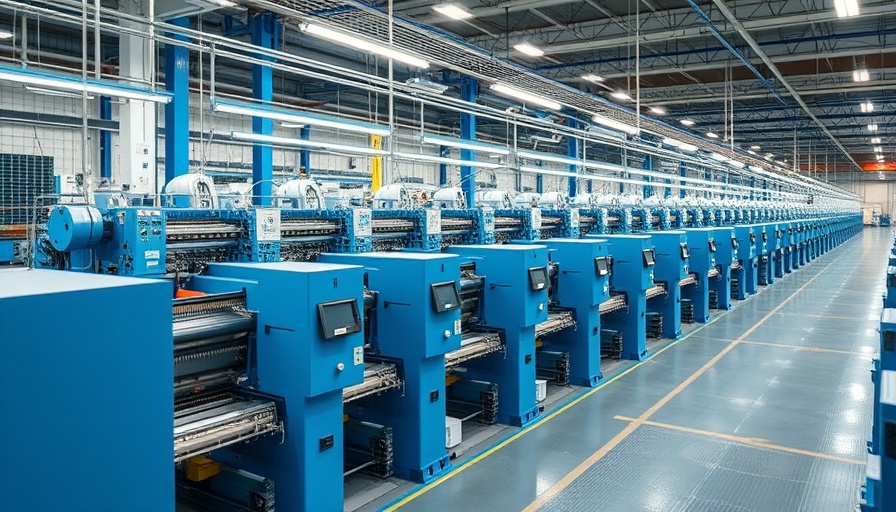
Understanding the Emissions Challenge in Fashion
The fashion industry, known for its vibrant creativity, faces a daunting challenge—reducing emissions in Tier 2 production. This often-overlooked stage, where fabrics are treated and produced before reaching brands, accounts for a staggering 45% to 70% of a brand's Scope 3 emissions. This complex landscape introduces a crucial pivot: focusing on Tier 2 suppliers not only aids in meeting sustainability targets but also enhances cost efficiency. As fashion continues to evolve under broader environmental scrutiny, it’s high time brands step up their commitment to decarbonization.
Decarbonization: The Essential Shift
Recent analyses highlight two coherent routes to decarbonizing Tier 2 production. The first involves leveraging technical advancements to reduce emissions significantly. By adopting renewable energy systems and optimizing textile manufacturing processes, suppliers can lower their carbon footprint while enjoying notable cost savings. For instance, implementing low-cost renewable energy can yield savings of up to $250 per metric ton of CO2 equivalent (CO2e) over time. The second route involves incentivizing lower-emission suppliers, allowing brands to cut emissions by up to 50% without shifting manufacturing locations. Immediate results can be seen through these strategies, suggesting that collaborative efforts could lead to profound industry changes.
A Roadmap for Action
To navigate this decarbonization journey, fashion brands can adopt several actionable strategies:
- Build Long-term Relationships: Establishing robust connections with Tier 2 suppliers is foundational. By focusing on strategic partnerships, brands can influence sustainability practices more effectively.
- Secure Primary Data: Utilizing primary emission data rather than secondary averages leads to more informed decision-making. This means partnering with traceability providers to gain insights into suppliers’ actual emissions and efficiencies.
- Educate and Provide Incentives: Brands should assist suppliers by creating decarbonization playbooks and offering support for technical upgrades, fostering a culture of continuous improvement.
- Commit to Renewable Energy: Brands can drive significant emissions reductions through investments in renewable energy utilities and technologies. Collaborative multistakeholder projects can pave the way for wider adoption.
- Collaborate with Industry Peers: By sharing best practices and innovative solutions for emissions reduction, fashion brands can amplify their impact, enabling broader industry shifts toward sustainability.
Anticipating the Future of Fashion Sustainability
The future of fashion does not lie solely in aesthetic innovation but also in ecological responsibility. Sustainable practices are not just ethically motivated; they are becoming economically essential as consumer awareness grows. As brands act decisively to improve their Tier 2 emissions, they not only comply with upcoming regulations but also appeal to a market increasingly favoring sustainability.
Investment in decarbonization today can lead brands to competitive advantages tomorrow. The actions are clear, and the time for substantial change is now.
By investing in sustainable practices, fashion brands have a profound opportunity to shift emissions trajectories and innovate in ways that redefine success in the industry. The commitment to integrating sustainability is not just a trend—it’s a strategic imperative for businesses poised to lead in a changing world.
 Add Row
Add Row  Add
Add 




Write A Comment